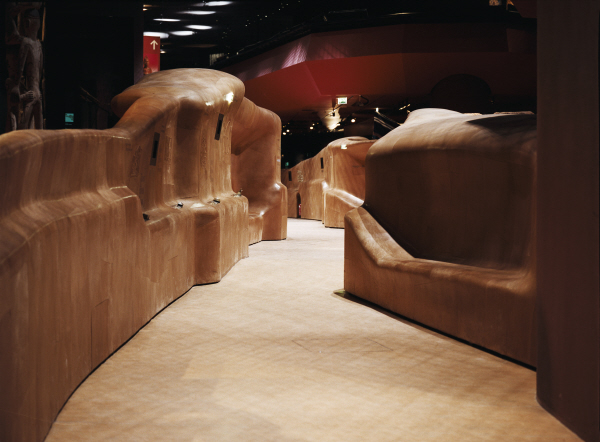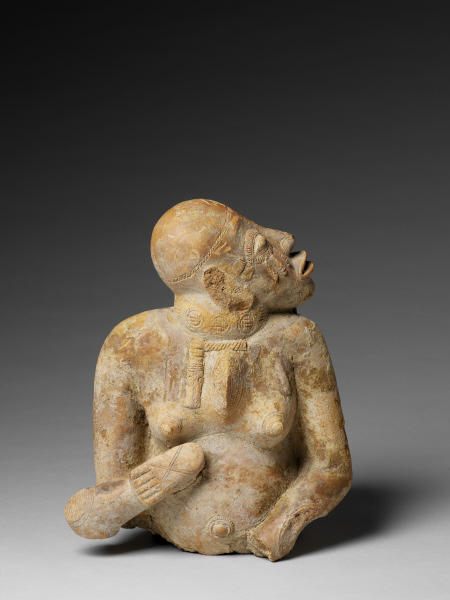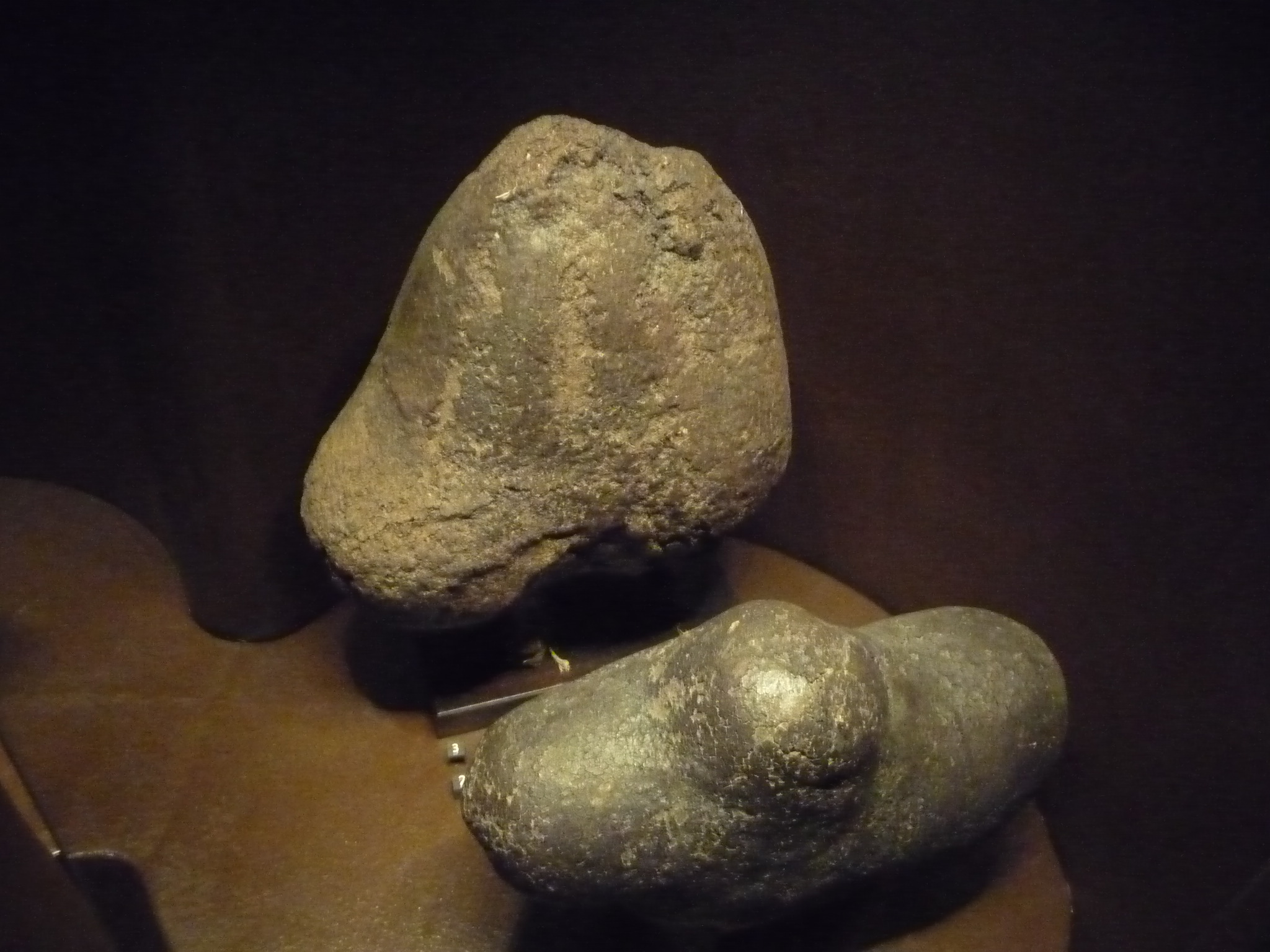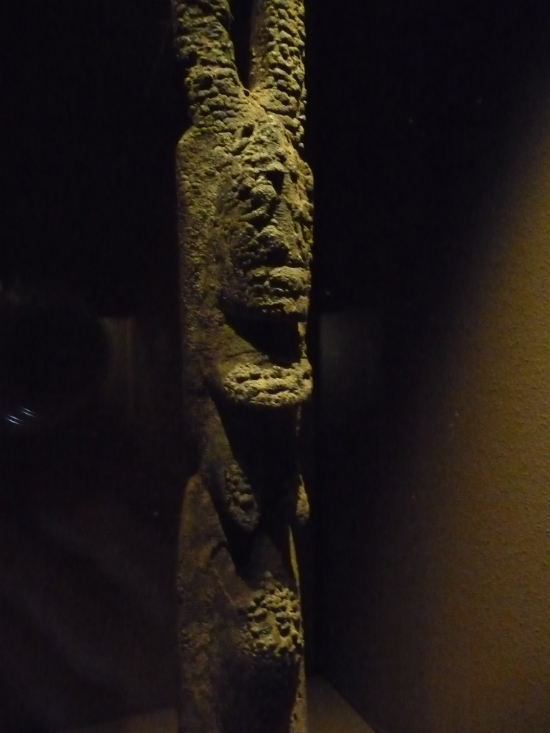First Question: Who is the figure above and where does s/he come from?
Answer: S/he has no name but is sacred to thousands across Mali and West Africa.
Second Question: Tell yourself exactly where Mali is. If you can't put your thumb on the African nation that's twice the size of Texas, don't feel alone. Harvard researchers recently discovered that roughly half of all Americans had no idea where India is. As the writer Isabel Allende once wrote, "Americans don't understand anything about anywhere in the world. Unless they are at war with that place, and then they understand a little bit."
This time, aside from logistical support, it's not American fighters who are deployed across the Malian desert but French troops, chasing brigades of jihadists into the mountains after they had threatened to capture the entire formerly French colony.

American soldiers are only providing logistical support, but if you’d like to know more, you couldn’t find a better place to spend half a day than at the architecturally dazzling Musée Quai Branly just beside the Eiffel Tower in Paris. It’s one of the world’s largest art museums (designed by Jean Nouvel) dedicated to the history, beliefs and cultures of indigenous people everywhere. A half hour in the West African section will give you as good a grounds as you could find on who the people of Mali are and where they come from. At the opening you’ll find the large breasted wooden figure above, arms raised at once to the realm of the ancestors and, it’s thought, in prayer to draw rain to the desert.
Despite ghastly warnings to the contrary, France’s military arrival in Mali last month was broadly greeted with enthusiasm and relief -- not because the diverse peoples there, notably the Tuaregs in the north, were eager for a return to French colonialism and the reign of FrancAfrique nor because of any fundamental hostility to Islam, explained Quai Branly curator Gaëlle Beaujean Baltzer, an anthropologist who visits that part of Africa regularly. The Tuareg who are Berbers have long maintained a “softer” version of Islam and at best entered into short-term strategic relations with apparent “jihadists”in the interest of winning their own independence.
“It’s a temperate form of Islam,” she said, open to multiple gods and beliefs but not to the Jihad extremists who tried to destroy any so-called pagan icons they found and who denounce any “western education” as itself sinful. Mali, which is itself an artificially drawn “nation” based on old French colonial boundaries, contains the Tuareg, Dogon, Fulani and Baombara peoples. Artifacts of each exist in softly lit cases at the Quai Branly. For all of them the world of the afterlife is important, and many of the masks, statues and clay icons have been and still are used to communicate with ancestors to “chase” the recently dead on to “the other world."
The hermaphrodite sculptures, for example, remain important to the Dogon and before them to the Tellem people in southern and eastern Mali. While formally Muslim, they have nonetheless retained their animist deities despite six centuries of Islam, Beaujean-Balter said, and they still maintain secret rites devoted to ancestor worship and crop fertility.

The Quai Branly collection includes pre-tenth century, pre-Islamic icons and statues including this female androgynous figure with a sacred snake draped around her neck, who was a powerful figure to the people once around the city of Djené, along the Niger River. Like the Dogon, the Djenné also still maintain polytheistic traditions and have little taste for the jihadist version of Islam. They have now mostly emigrated westward into current-day Mali and mixed with the Dogon.
Among the oldest and most mysterious objects are these deeply sacred animal figures used still at the beginning of the 20th century and spirited away, without permission, by French anthropologists in the 1930s. They were used by the Bambara people in southern Mali in still secret rites alongside Islam. The clay creatures included hidden stomachs that were stuffed with everything from wood and bamboo shoots to excrement, left to ferment and then consumed from both orifice ends of the animal.
Beaujean-Baltzer takes me into a semi-darkened nook where another hermaphroditic statue is displayed in soft light, its arms raised, female upper body, male genitals below, but the "skin" apparently pock-marked, which she describes as the "marks of libation." She explains that the figure, or fetish, was made of a mixture of clay, grain, blood and unknown other material, and that to remain powerful in the desert climate, she must be regularly “nourished.” Another similar looking figure, found in a necropolis, is covered with postules on the face, evidence of suffering.
The sculptural quality of the pieces is generally stunning even including the so-called primitive pieces that date well before the arrival of Islam between the 10th and 14th centuries. A collection of some 300 masks, "gathered" by French anthropologists between 1900 and 1945, some even later, have been used by the Dogon in ceremonies to drive dead or evil spirits away and bring calm to village life. Clever people, the Dogon also discovered that European tourists were ready to pay to see such parades, which they were happy to stage, and even include fierce images of blond people with grotesque faces.

Most extraordinary is the visual presence of mystery, myth and faith of diverse origins that seem to cohabit agreeably one next to the other. Official status is given over usually to Islam -- though not an Islam of the violent exclusive sort seen in Afghanistan, Iran or North Africa that have terrified the western mind. Which is not to say these multiple faiths have begun to fade. Anything but, said Beaujean-Baltzer, who is doubtful about the Franco-American effort to turn Mali and its neighbors into modern states with professional police and armies.
"There is very little idea of a strong state. If you look at the situation in Mali, you see the military incapable of confronting [its] opponents. People turn to Islam for their daily needs. The state has neither enough means to maintain schools or the infrastructure. All that is undertaken by the Muslim business people."
"Even keeping up the roads?" I ask.
"Yes."
"Even today?"
"Yes, that's still how it is today. If you look at the position of religion versus the state, religion still gets a stronger response from population than the state. Islam is recognized as the major force. If they need water for crops or in personal life, if the family doesn't have enough essentials, they turn to their religious leaders."
However complex and contradictory their faith practices may be.




